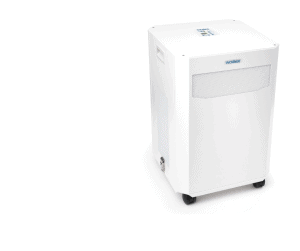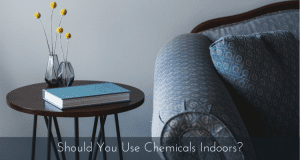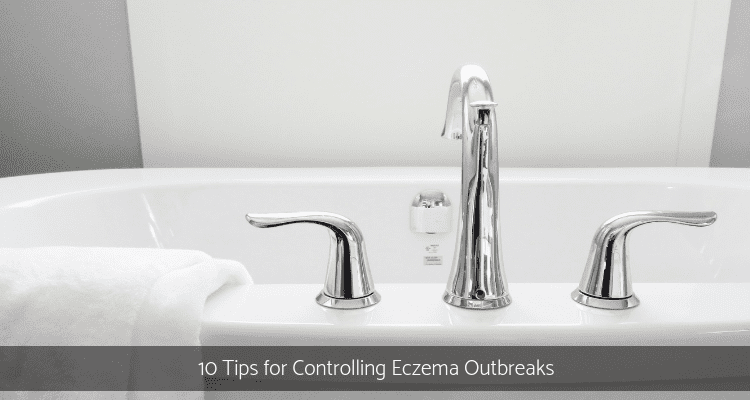Eczema affects one in three Australasians at some stage in their lives, a skin disease characterized by mild to extreme inflammation of the skin according to Eczema Association Australia (n.d.). The frequent itchiness can make daily life difficult and stressful for the eczema sufferer. Chronic eczema can result in thickening and pigmentation of the skin – so controlling eczema outbreaks is essential.
The common causes of eczema are:
- a family history of the disease
- and there is an 80% chance that if both parents have eczema that their children will too
- asthma
- or hay fever
- certain foods such as dairy and wheat products, citrus fruits, eggs, nuts, seafood, chemical food additives, preservatives and colouring
- some alcohol
- stress
- certain environmental triggers such as tobacco smoke, chemicals,
- certain allergens including house dust mites, moulds, grasses, plant pollens, foods, pets and clothing, soaps, shampoos and washing ingredients
- certain weather conditions such as hot and humid, or cold and dry
- air conditioning
- overheating
If your child or a family member has eczema, you would want to do everything possible to help them battle it head on. Symptoms range from moderate-to-severely itching skin, rash, dry, red, patchy or cracked skin. Appears mostly on the face, hands, neck, inner elbows, backs of the knees and ankles, but can appear on any part of the body. Some eczema sufferers’ the skin is ‘weeping’ watery fluid and others present with rough, ‘leathery’, thick skin.
Although it is not possible to control the external environment, you can take several steps to keep eczema and its symptoms under control.
 10 Tips on Controlling Eczema Outbreaks
10 Tips on Controlling Eczema Outbreaks
1. Assess your food triggers- Visit an allergy specialist or integrative medicine practitioner to determine which foods exacerbate the eczema. Milk, wheat, eggs and food colourings are some of the foods that trigger eczema, especially in children.
2. Stress Less- Exercising regularly can help reduce your stress and control eczema outbreaks and flare ups.
3. Eliminate scented personal products – avoid fragrant soaps, perfumes, cosmetics, and body lotions, and use personal care brands that are non-irritating for you, mild and made from natural ingredients.
HOW TO
10 Simple Steps to Reduce Chemical Load
Do you smell ‘fragrant smells’ wafting out of nooks and crannies in your home, ‘perfumed scents’ emanating from your furnishings and belongings? It’s a common problem. Solve this chemical load issue with a few troubleshooting tips.

4. Bathe with room-temperature water- the chlorine present in the bathing water can exacerbate eczema, flare ups and sensitive, ‘raw’ skin. Use a water filter at the faucet to reduce the presence of these harsh chemicals. When you are done, gently pat dry the skin. Use a gentle, natural body lotion to moisturize the unaffected skin.
5. Use natural cleaning products- Chemical based cleaning products such as detergents, and washing powders can also irritate the skin. Instead use natural cleaning products.
PRODUCT:
Naturally Home Starter Kit
Get back to basics and DIY! All the ingredients you need to make your own SAFE and EFFECTIVE cleaning products. The good old basics that our grandmothers used to clean with!

6. Use dust mite allergy covers- Cover pillows, mattresses and doonas with cotton dust mite covers – creates an impermeable barrier house dust mite and pet allergens and eczema sufferers are less vulnerable.
PRODUCT:
Allerprotect Dust Mite Bed Set
Create a barrier between you and the dust mite allergens by enclosing the entire mattress, the entire pillow and the entire doona. Provides asthma and allergy relief by stopping the continual night time exposure to dust mite allergens while you sleep.

7. Control the temperature and humidity levels- Cover pillows, mattresses and doonas with cotton dust mite covers – creates an impermeable barrier house dust mite and pet allergens and eczema sufferers are less vulnerable.
Information:
Buy or Hire a Dehumidifier
Round the clock protection when you need it most! Reduce mould, mildew, dampness, condensation, odours. Relieve hayfever, sinus headache, influenza, sneezing, itchy eyes, stuffy nose, coughing, allergic rhinitis, asthma symptoms any time of year!

8. Wear easy breathing fabrics- avoid fabrics such as polyester and wool that can irritate the skin and wear comfortable, cool to touch clothes.
9. Protect your hands- by wearing cotton gloves while doing household chores such as washing, gardening and cooking. Replace woollen gloves in winter with cotton or leather gloves to keep your hands warm.
Information:
Should You Use Chemicals Indoors?
If you live, work or play in buildings, chances are you have heard someone talk about chemicals. But should you use chemicals indoors?

10. Consult your doctor- for advice on controlling eczema outbreaks. They may prescribe an over-the-counter cream, oral antihistamine or other medication andtreatments. According to Royal Children’s Hospital Melbourne (2018) wet dressings are essential in controlling a flare and promoting sleep and should be applied if the other treatments have not cleared the eczema within 24 hours.
On a personal note
Working on the hospital wards was my first real experience hands on in chemicals, excuse the pun. As a nurse, my career after leaving school, I was required to wash my hands thoroughly between each patient. My skin cracked, my face pulled tight, I cringed at the smell, I lathered up the solution and it ‘bit’, literally bit into the cracks in the creases along my fingers, each digit, my hands along each knuckle. Since I was a first year nurse, I was forced not to tell anyone.
It was not till 8 years later that I found my hands suffered ‘contact dermatitis’ according to National Eczema Association (n.d.), another 10 years before I found out, only by chance conversation, that the daily cleanser contained mercury, fragrance and hydroxy acid amongst other chemicals that no one could decipher. A year after gaining registration I left, my hands were too painful, I could not tolerate water on them, corticosteroid cream only relieved it for half an hour, only because I could not understand why medicate for an ailment that would never go away.
Towards healthier living Carol Parr ♥
As Building Biologists, we have acquired knowledge of adverse health effects and recommend effective strategies to reduce occupants’ exposure by eliminating and controlling as many sources of pollutants in order to create healthy indoor living environments that are as exposure-free and natural as practically possible.
References:
Eczema Association Australasia. nd. Facts About Eczema. [ONLINE] Available at: https://www.eczema.org.au/eczema-facts/. [Accessed 1 February 2017].
The Royal Children’s Hospital Melbourne. 2018. Eczema Management. [ONLINE] Available at: https://www.rch.org.au/rchcpg/hospital_clinical_guideline_index/eczema_management/. [Accessed 6 February 2019].
National Eczema Association. nd. An Overview of Differnt Types of Eczema. [ONLINE] Available at: https://nationaleczema.org/eczema/types-of-eczema/. [Accessed 1 February 2019].
ASCIA. 2014. ASCIA Allergy in Australia Submission 2014. [ONLINE] Available at: https://www.allergy.org.au/images/stories/reports/ASCIA_Allergy_in_Australia_2014_NHPA__Submission.pdf. [Accessed 5 March 2019].
Author
-
We’re glad you’re here. We’re Carol and Tony, founders of one of the longest running Healthy Home Blogs in the world, Mitey Fresh Australia. We’ve been on this journey for the last 25 years and are passionate about helping families sift through health hazards and triggers like allergens, mould, water damage, chemicals and EMFs, to get clarity about what’s toxic and what’s not so they can create a healthy and happy home for their family they love. Each month, people visit this blog seeking focus on the health and wellbeing of their loved ones, sustainable and effective practice tips and guides, to help create and manage healthier indoor spaces, improve the built environment that is pleasing to the senses and support healthy living and nature, every day. Starting this blog was to help change people’s lives, one family at a time, and we can’t wait to share how its allowed us to stand next to you and show you how interpreting these synergies between buildings and the environment they are built in will impact upon the health and well-being of those who occupy them. Find out more about Healthy Homes and what this blog can do for you!





